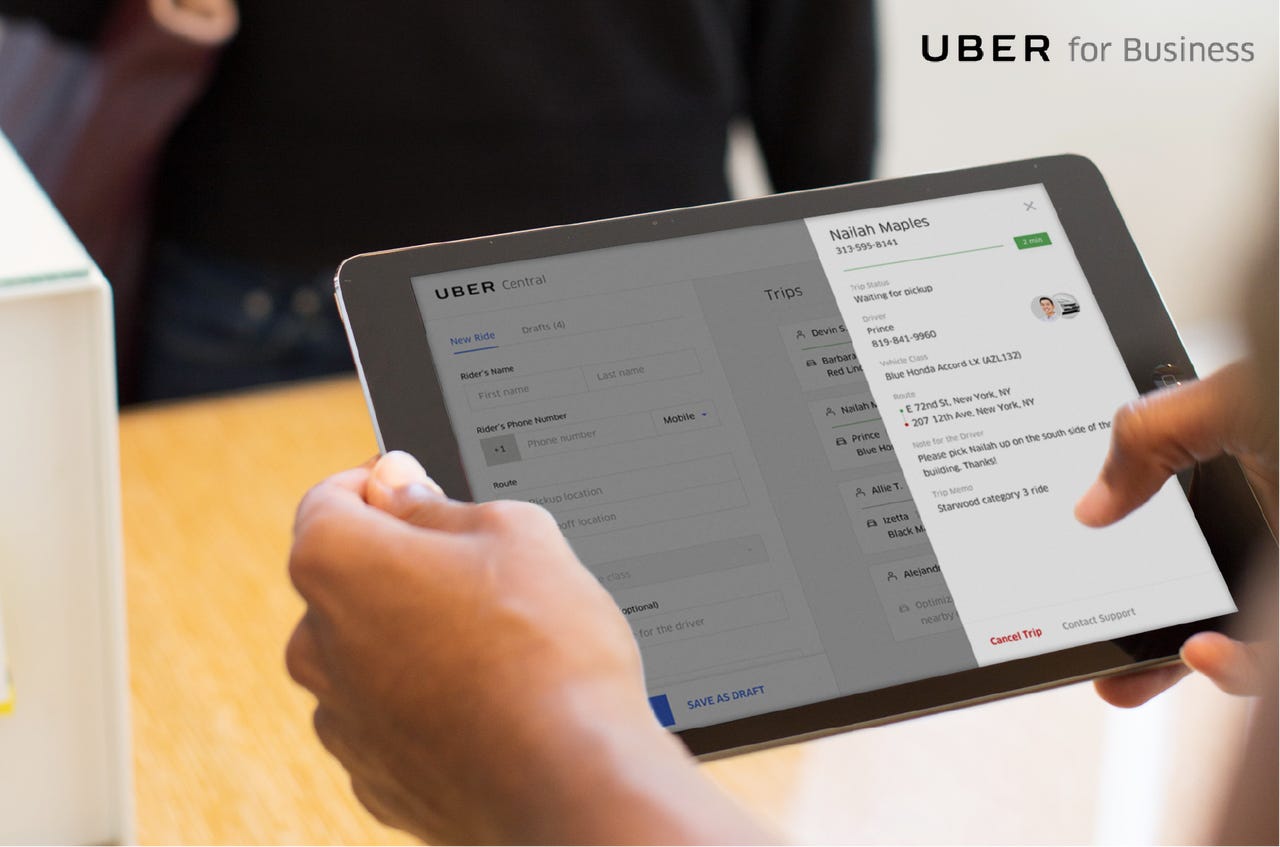Uber for Business expands with new service Uber Central


Uber is taking steps to bolster its enterprise-facing business, expanding its Uber for Business platform beyond employee travel.
With the new service Uber Central, organizations can book and manage rides for their own customers and clients. Using a single-view dashboard via the Uber for Business platform, a business can request a ride on a clients' behalf, or request multiple rides at once. The client doesn't need an Uber account or smartphone; they'll receive an SMS message with information about their driver and updates on the trip.
To make trip management more efficient, a business administrator using Uber Central can save routes, along with specific pick-up and drop-off locations. The administrator can also use the dashboard to monitor trips as they happen.
With about 8,000 organizations participating in the pilot program, Uber says the service should appeal to a wide range of businesses. Hotels, for instance, could use the service in place of inefficient shuttles that carry passengers to and from the airport. Agero, one of the largest roadside assistance providers in the US, has been using Uber Central to offer rides to customers when their vehicles are inoperable. Meanwhile, the nonprofit Common Courtesy has used the service to expand mobility options for seniors and other people who can't drive.
Uber decided to build Uber Central after observing that its Uber for Business customers "were willing to go through a pretty manual process to get at this functionality," said Greg Greiner, Uber for Business' head of product.
Uber for Business launched a couple years ago and now has about 65,000 businesses using it to manage their employees' ground transportation needs. Yet some businesses, looking for a way to also manage rides their customers, were going so far as to buy dozens of smart phones to request rides.
Because so many of the back-office needs of Central line up with the core Uber for Business service -- such as reporting and billing functions -- Uber built Central as a product on top of Uber for Business.
Central is just one example of how the Uber for Business platform "can be used across a variety of different use cases and products that Uber ultimately creates and builds," said Travis Bogard, Global GM of Uber for Business, promising more Uber for Business expansions in the months to come.
Uber for Business has an annual run rate of around $1.6 billion, Bogard confirmed. The focus on enterprise is a natural fit for the mobility-as-a-service company -- Uber recently surpassed Starbucks as the most common business expense, a recent study found.
The relatively new, solid business segment should help reassure investors, as the company aims to keep growing its revenue. Uber recently disclosed to Bloomberg that its net revenues in 2016 came to $6.5 billion but adjusted net losses totaled $2.8 billion.
A stable revenue stream also helps counter the spate of bad headlines Uber has endured recently, spanning topics like challenges to Uber's driverless car initiative, battles with lawmakers and regulators, and charges that the company promotes a toxic and sexist corporate culture.
Bogard suggested the bad publicity hasn't hurt Uber for Business, since it's easier to have a more "high-fidelity conversation" with business customers about such issues.
"Companies themselves understand and largely have, as they've grown, dealt with similar issues," he said. "There's a level of understanding and... asking, 'Are you doing the right thing to address them?'"
Uber, he added, takes all of its current challenges "very seriously," and business customers "have have appreciated what we're doing and our approach."
So long as customers are satisfied, the business segment offers plenty of potential for Uber. The global ground transportation market is worth $250 billion, Bogard noted. With Uber's global coverage -- the company is in around 75 countries -- it can offer the powerful selling point of "one consistent experience" for businesses, he said.
Meanwhile, business transportation needs line up with Uber's grander goals of creating more efficient transportation systems that are less reliant on individual car ownership. Currently, 10 percent of working hours are spent in traffic each year in the US, Bogard noted, while about 25 percent of the average person's salary goes toward their car.
"Indirectly, companies are spending a tremendous amount on that car ownership world," he said.
Didi Chuxing to build 'intelligent transport ecosystems'